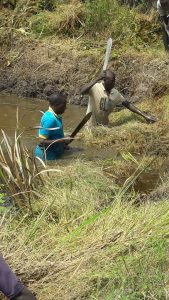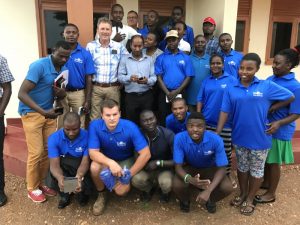Since May 2018, Bles Dairies Consultancy, in cooperation with VetEffecT has been actively involved in an extensive “Dairy Farmers Development” project in Uganda. During the first phase, 50 local Dairy Development Extension Experts (DDEs) have been selected to work for a local milk factory. In the long term, these DDEs will mentor 1.000 farmers in the development of their dairy farms – with as goal to increase the production from 80-150 to 1.000 litres of milk per day.
Begin September 2018, the second group of 26 DDEs finalized their eight week training and two-week internship at the thirteen selected lead farms. The trainings have mainly been provided by Bles Dairies experts Ruud Engelman, Berend de Leeuw, Rinze Fokkema and experts from Bles Dairies East Africa. Intern Gabry Heistek also joined the project for a period of 3 months, researching the financial results of the consultancy work and the farms.
Water collection, management and distribution is crucial for both the welfare of the animals and the milk production. Therefore, the lead farms will be intensively guided in the process of providing more water to the cows. One of the lead farms was not used to giving the animals water at night. Following our advice, the farmer constructed a rainwater reservoir at the foot of a hill, placed a 40.000 litre storage tank on top of the hill and created a drinking spot 10 metres below. With the use of an aggregate, the water is now pumped 550 metres up the hill, by doing so gravity assures that the water flows towards the drinking spot for a permanent and sufficient water supply. It goes without saying that this farmer’s milk production has increased by 76% in comparison to the same period last year.
This large Dairy Development Program (DDP) from IFC (World Bank Group) will continue until 2019. The projects is again a step further, but still plenty of work to be done. So we look forward to the next trainings and activities!
Evidently, the rainwater reservoirs need regular maintenance,
what the farmers do by hand as one can see in the photo.


